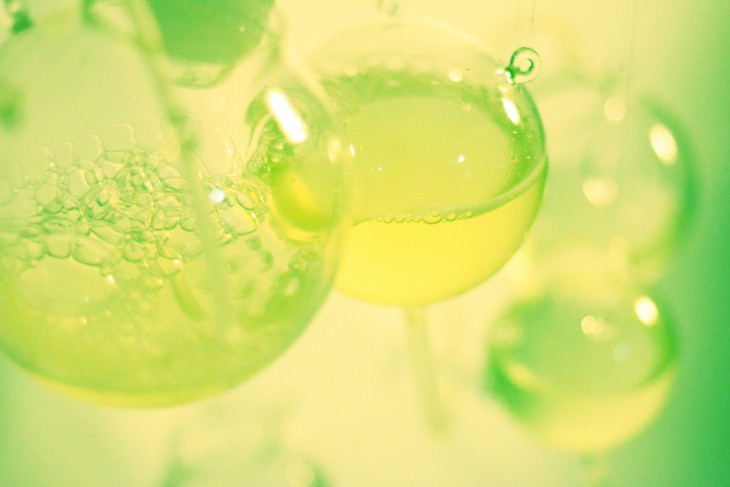
Introduction
Microalgae are single cellular organisms living in marine or freshwater and a very important part of nature. Capable of performing photosynthesis, they produce approximately half of the atmospheric oxygen and use simultaneously the greenhouse gas carbon dioxide to grow photo-autographically. Microalgae are the base of the food chain, provides energy and a huge variety of nutrients that can be used for food, bio fuels and medicine. Microalgae biomass is often measured with chlorophyll concentrations and can provide a useful index of potential production. After and extensive research and experimentation process our work was devoted to the study of microalgae’s behavior. Further on, we were looking for different ways and applications for environmental improvement using microalgae. Based on our experimentation results and data collection, the project became the development of an “eco-machine” apparatus for microalgae wastewater treatment and the making of a network to apply in a larger scale such an entire building or a city.
Water resources are scarce and wastewater is a big environmental issue nowadays, and our work aims to show that solutions exist, to treat the wastewater in cheaper and more energy efficient ways with microalgae, rather with then the conventional industrial ways that we know. This becomes possible with our “eco-machine” apparatus for wastewater treatment

The ‘eco-machine’ apparatus
The ‘eco-machine’ apparatus is a three-step loop system, which is only one component that can be multiplied into a network of components and adapted in different environments and different scales worldwide. The design of the ‘eco-machine’ apparatus is based on the performance and the behavior of the microalgae cells. Throughout computational methods for defining the morphology, we have defined not only a single prototype but also this allowed us to create networks of components for a larger-scale. We have started the work throughout four experiments (testing different: light color, light intensity, nutrients, wastewaters) with microalgae, and we have discovered the ideal environment for fast reproduction while cultivating microalgae. The entire process of changes of the outputs, based on the given inputs, were monitored with Arduino, manual testers and transferred in Processing. The outcome of this data collection and data processing is an algorithm that has shown us the reproduction activity and behavior of the single microalgae cells, which became a solid base for our work focus. We have obtained the most significant and progressive changes in the results, from the wastewaters experiment. We proved that the reproduction activity of the microalgae is very intense inside different wastewaters, such as, gray water from kitchens and toilets. Afterwards we were to test and study to what extent the water could be purified with microalgae. The results were very inspiring since there was an improvement of the water quality from our ‘eco–machine’ apparatus. The final outcomes and results were once again measured with Arduino and manual testers, and further the numbers were applied to the algorithm in Processing to create more simulations for different environments and different scales. We saw a very clear application and need for such projects and researches in the field and most importantly to make the society aware of such possibilities and solutions. This way of data collection and processing have inspired us towards developing a software interface. It will be an interactive platform that will be used in our next ‘eco-machine’ apparatus to show the processes, data, results and many simulations regarding the vision and scale of the project.
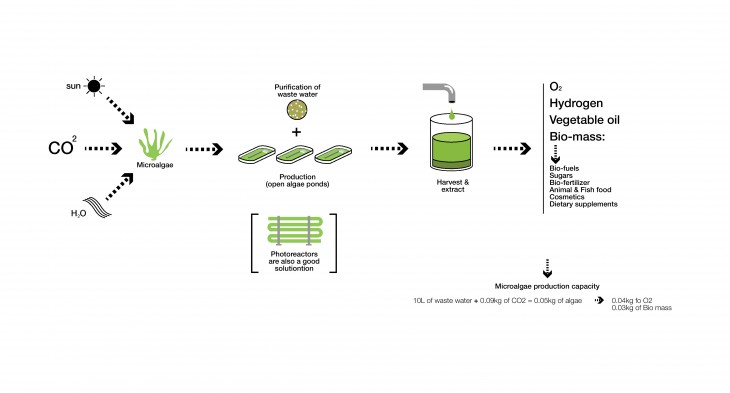
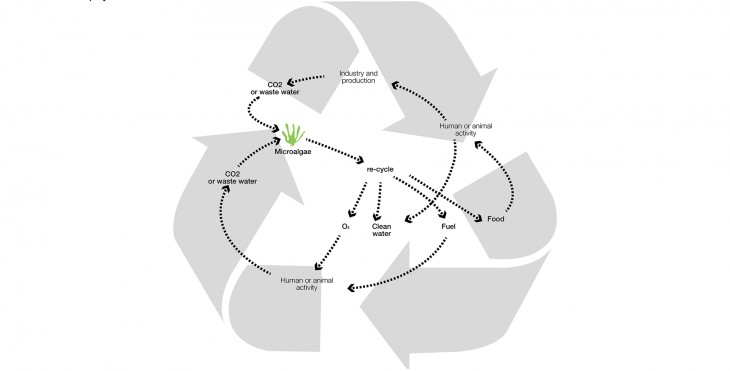
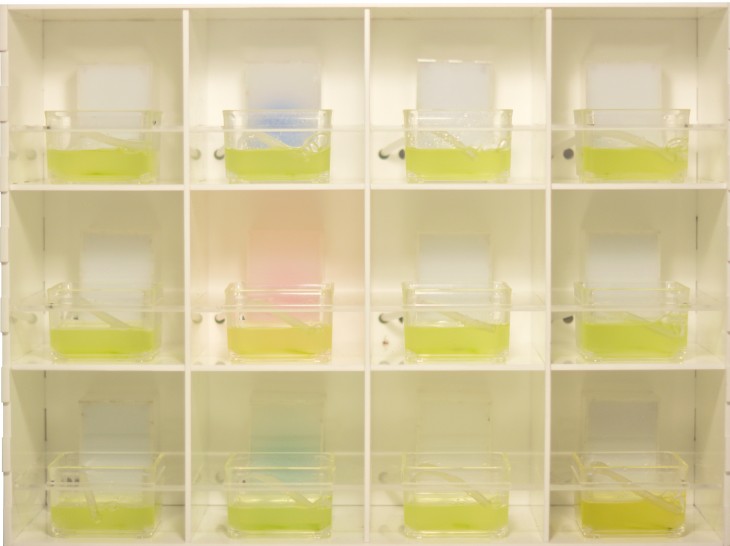
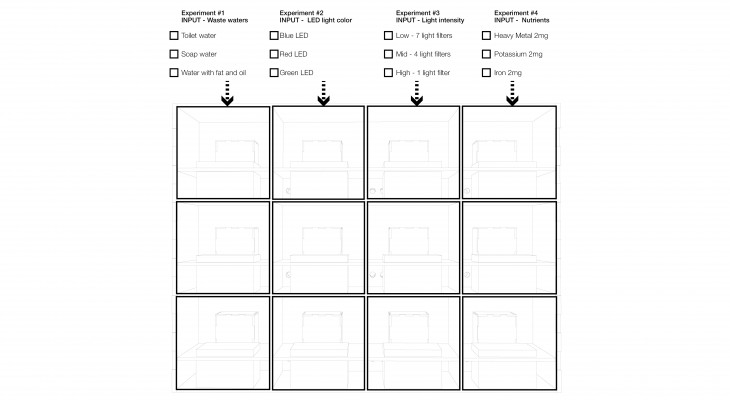
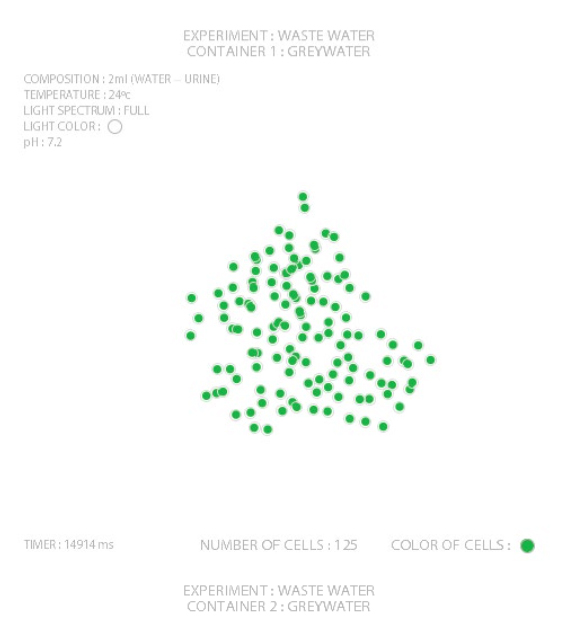
Algaetecture as public activator
Now our focus is on the “Active Public Space”, meaning that we want to include people and the public in the process of wastewater treatment and to make them aware of what are the current global, local and even domestic issues related to it, propose solutions and show people new ways of thinking. Making people aware, search for participation, interest of biology specialists and larger enterprises in the field of wastewater treatment is the main goal. With this level of help the work can be developed and in our believe, can revolutionize wastewater treatment in regional and global scale and save lots of natural resources and help many places around the world that struggle from the lack of clean water sources. To make this exposition we have manufactured only one component, a prototype, of the “eco machine” apparatus. It is made out of glass, so that throughout its transparency it will be able to expose the whole process of the wastewater treatment with microalgae. Throughout the interactive interface software, the data obtained from the process of purification, will be presented with interactive graphs that one can understand by himself the amounts of wastewater, for instance and how much microalgae is needed to purify it. Showing not only the process but also importantly we are trying to show simulations based on our data of the possibilities in terms of flexibility for large-scale application of the ‘eco-machine’ for a more sustainable global thinking.
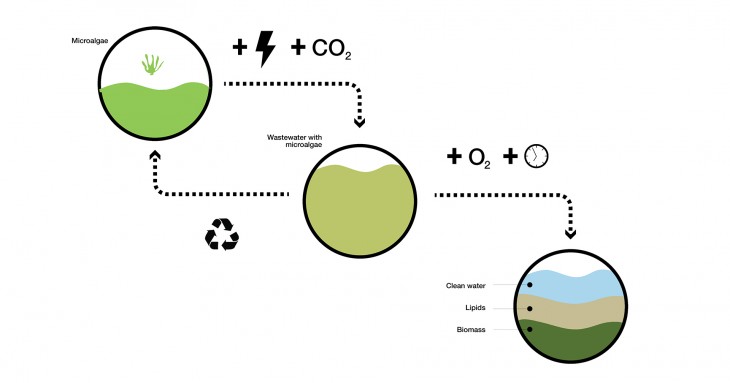


Algaetecture is a project of IaaC, Institute for Advanced Architecture of Catalonia developed at Master of Advanced Architecture in 2015 by:
Faculty: Claudia Pasquero (Introductory Studio Tutor) Carmelo Zappulla (Introductory Studio Tutor) Maria Kupstova (Introductory Studio Assistant)
Students: Andre Resende Mohamad Atab Hsin Li Stefan Fotev Sureshkumar Kumaravel Yasamin Khalilbeigi
